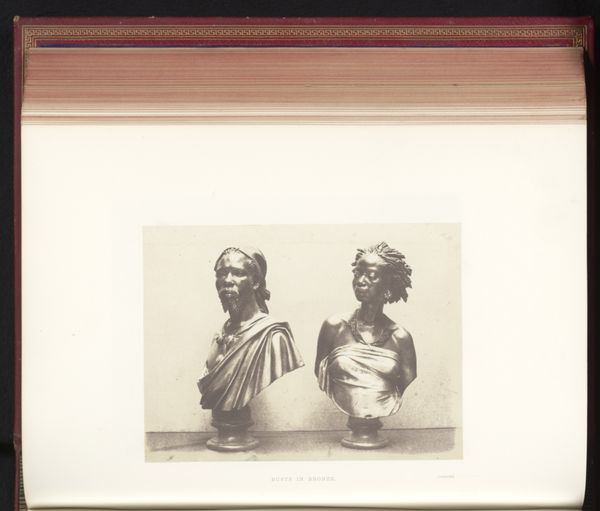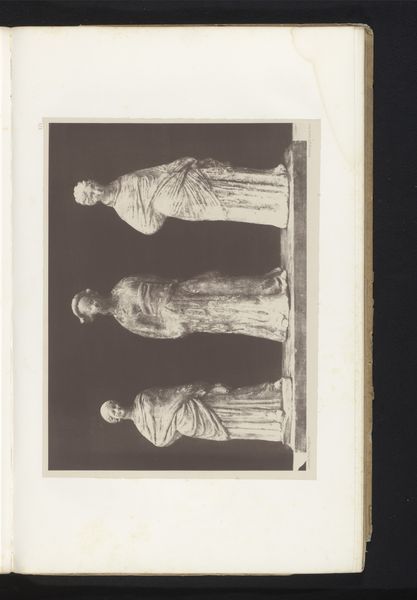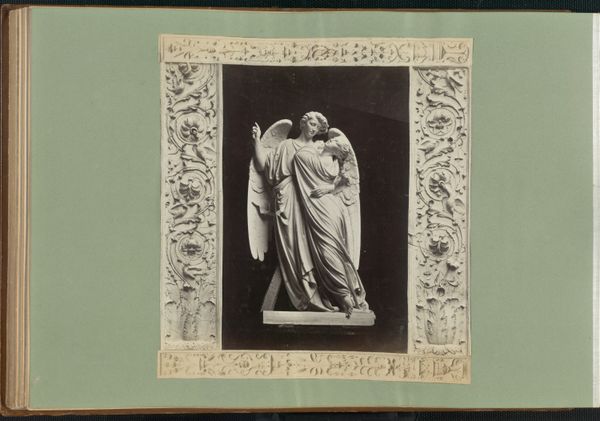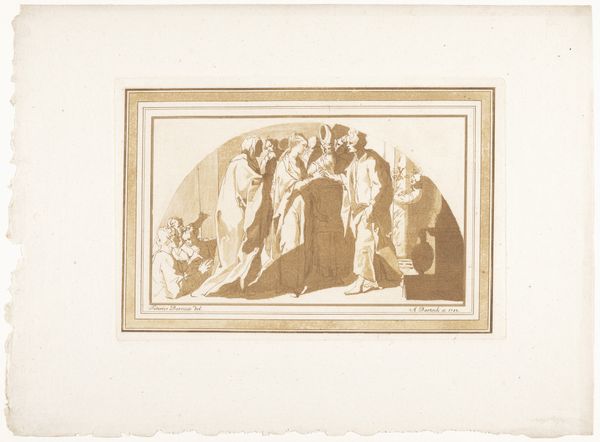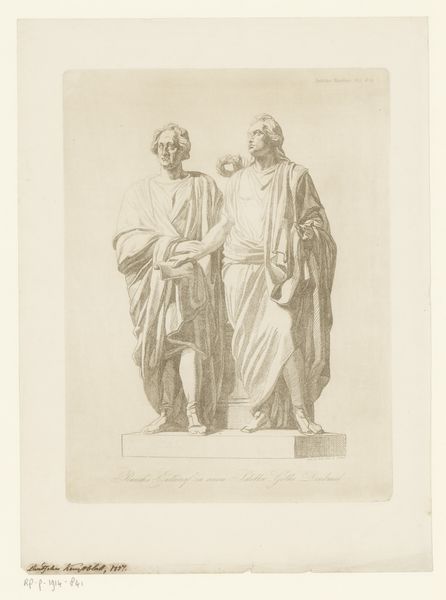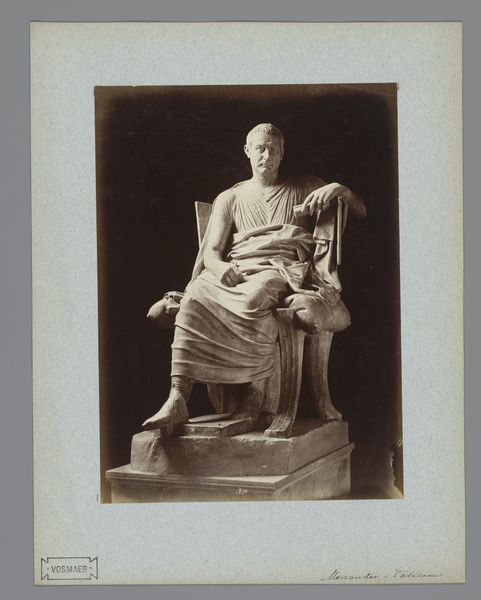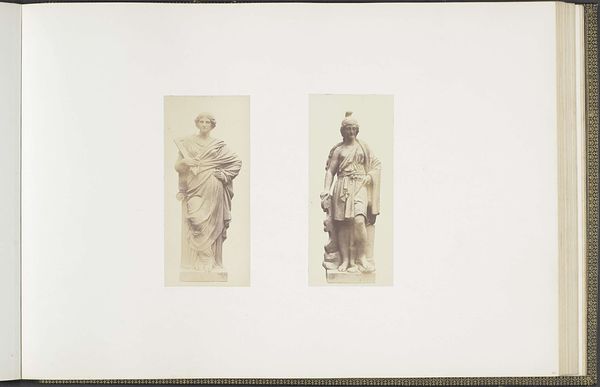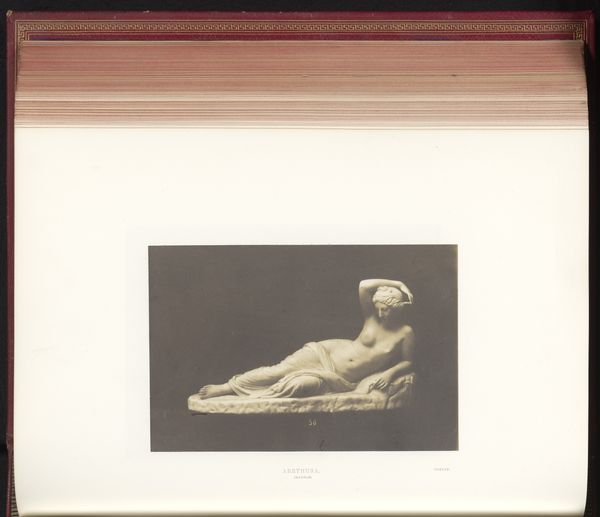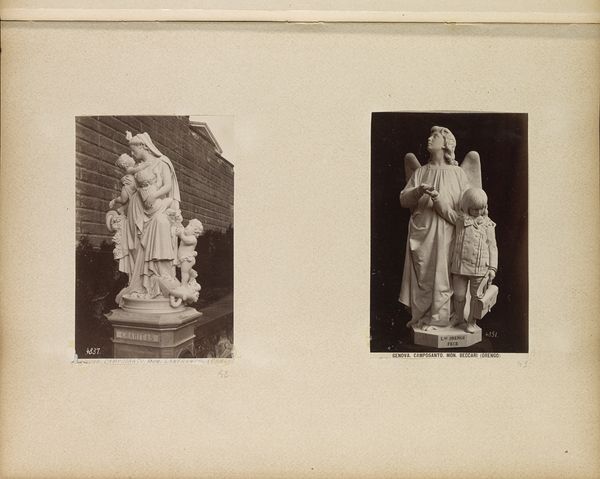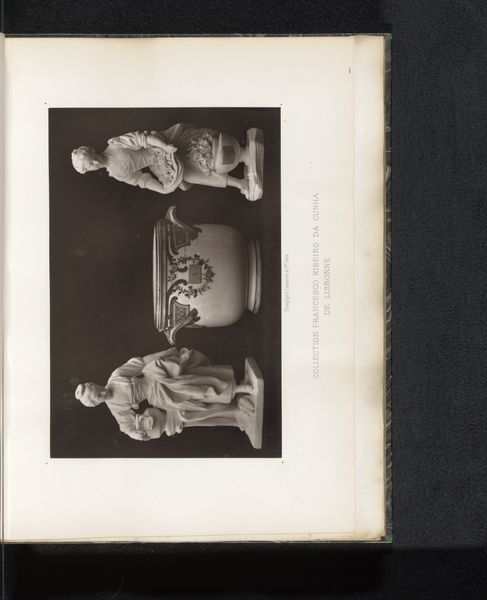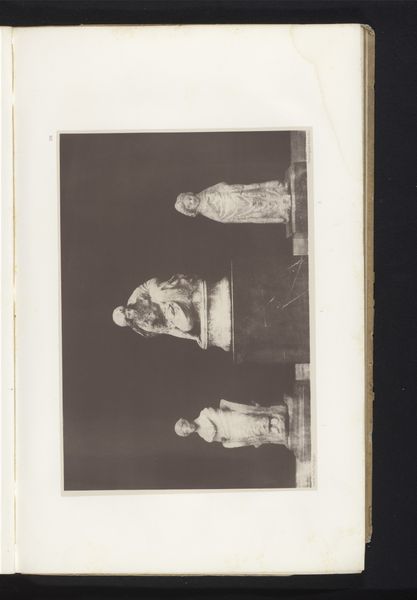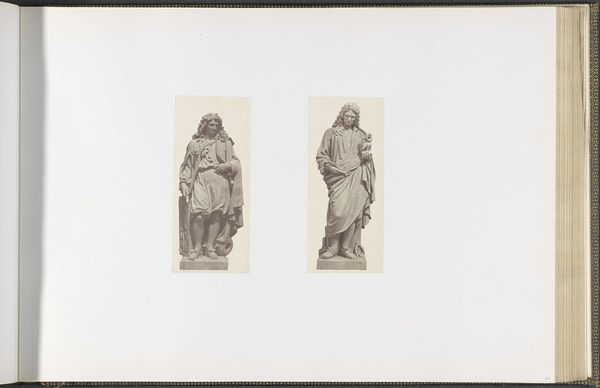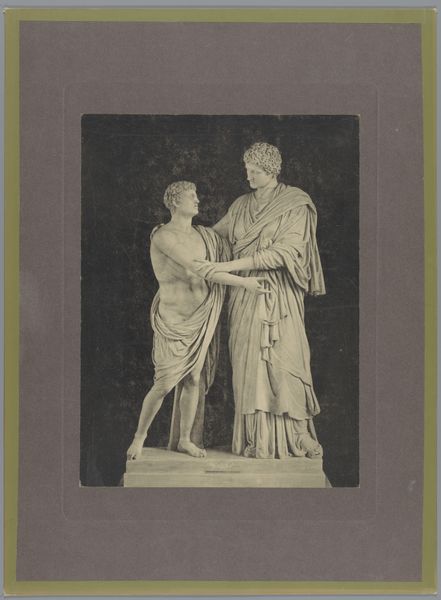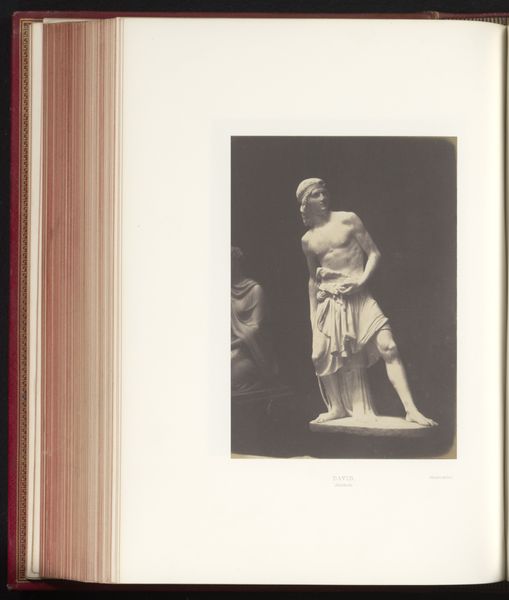
Twee standbeelden van John Scott en William Scott door Musgrave Watson, tentoongesteld op de Great Exhibition of the Works of Industry of All Nations van 1851 in Londen 1851
0:00
0:00
daguerreotype, photography, sculpture
#
portrait
#
statue
#
sculpture
#
daguerreotype
#
photography
#
ancient-mediterranean
#
sculpture
#
realism
#
statue
Dimensions: height 150 mm, width 198 mm
Copyright: Rijks Museum: Open Domain
This photograph by C.M. Ferrier and F. von Martens captures Musgrave Watson's sculptures of John Scott and William Scott, exhibited at London's Great Exhibition in 1851. The Great Exhibition was a celebration of industry and empire, a showcase of Britain's global power. Watson's sculptures, depicting two prominent legal figures, embody the Victorian establishment, and their inclusion in the exhibition tells us much about the values that the institution was trying to promote. Consider the visual codes, the classical style lends an air of timeless authority, reinforcing the idea of a stable, ordered society underpinned by law. These sculptures, and indeed the exhibition itself, are not neutral objects. They actively construct and reinforce a particular vision of British identity and its place in the world. Understanding the social and institutional context helps us to decode the complex messages embedded within the art. Digging into archives, exploring exhibition catalogues, and studying biographical details of the artists and subjects involved sheds light on the social forces that shaped both the creation and reception of such works.
Comments
No comments
Be the first to comment and join the conversation on the ultimate creative platform.
